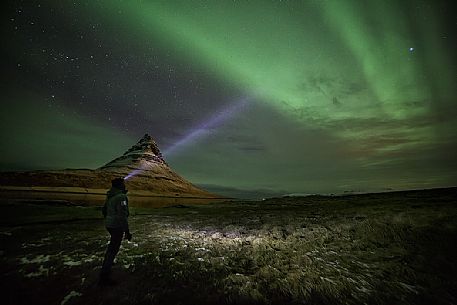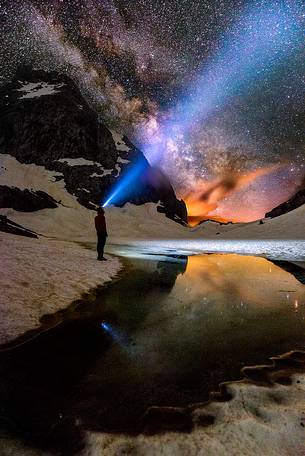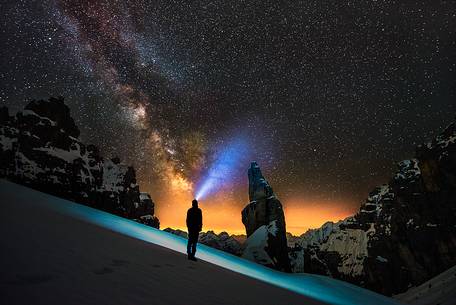Please Sign in or Register now to manage lightbox and cart
Lightboxes - How to use them
A Lightbox is a virtual table where you can collect and view images of interest.
Collect the files you like from any search results page or file close-up page by clicking the 'Add to your Lightbox' icon.
To open and view your selection, click the Lightbox link on the top navigation menu. You can have more than one lightbox if you're working on different projects.
You can email a Lightbox to friends and colleagues for review and discussion before purchase; they will receive an email with a link to the Lightbox that you created.
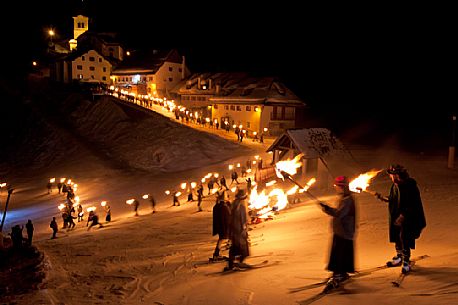
photographer: Diana Crestan
Costumed skiers descend from Monte Lussari mount with the torch lit on New Year's day. Tarvisio, Julian alps, Friuli Venezia Giulia, Italy, Europe
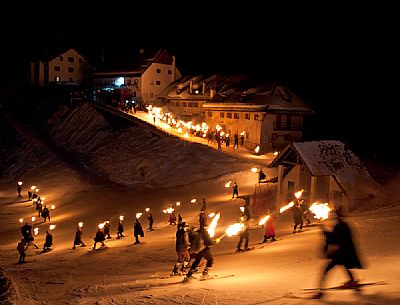
photographer: Diana Crestan
Costumed skiers descend from Monte Lussari mount with the torch lit on New Year's day. Tarvisio, Julian alps, Friuli Venezia Giulia, Italy, Europe

photographer: Diana Crestan
At the historical re-enactment of Macia in Spilimbergo, people play juggling games with fire, Friuli Venezia Giulia, Italy
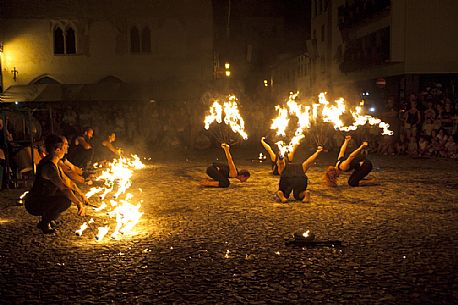
photographer: Diana Crestan
At the historical re-enactment of Macia in Spilimbergo, people play juggling games with fire, Friuli Venezia Giulia, Italy
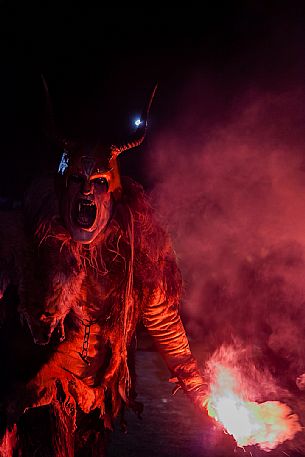
photographer: Maria Fancello
Krampus are horned, antropomorphic folklore figures companions of Saint Nicholas. You can meet them on the 5th or 6th December in regions including Austria, Bavaria, Croatia, Hungary, Slovenia and Northern Italy. This photo was taken in Tarvisio, Friuli Venezia Giulia, Italy
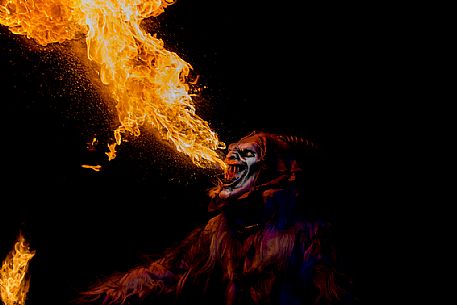
photographer: Maria Fancello
Krampus are horned, antropomorphic folklore figures companions of Saint Nicholas. You can meet them on the 5th or 6th December in regions including Austria, Bavaria, Croatia, Hungary, Slovenia and Northern Italy. This photo was taken in Tarvisio, Friuli Venezia Giulia, Italy
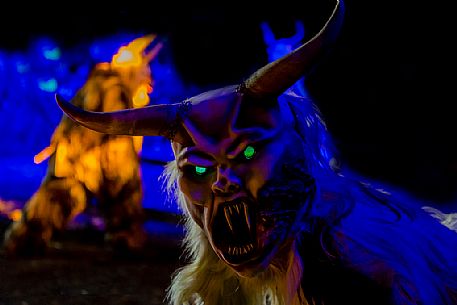
photographer: Maria Fancello
Krampus are horned, antropomorphic folklore figures companions of Saint Nicholas. You can meet them on the 5th or 6th December in regions including Austria, Bavaria, Croatia, Hungary, Slovenia and Northern Italy. This photo was taken in Tarvisio, Friuli Venezia Giulia, Italy
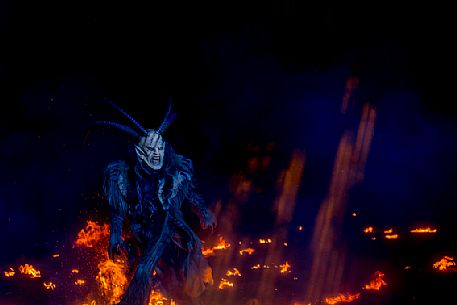
photographer: Maria Fancello
Krampus are horned, antropomorphic folklore figures companions of Saint Nicholas. You can meet them on the 5th or 6th December in regions including Austria, Bavaria, Croatia, Hungary, Slovenia and Northern Italy. This photo was taken in Tarvisio, Friuli Venezia Giulia, Italy
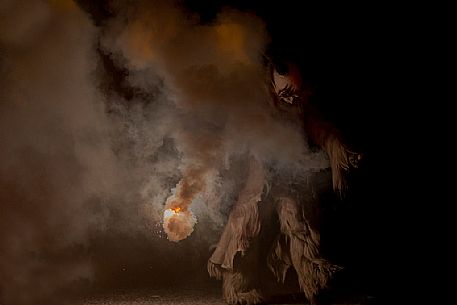
photographer: Maria Fancello
Krampus are horned, antropomorphic folklore figures companions of Saint Nicholas. You can meet them on the 5th or 6th December in regions including Austria, Bavaria, Croatia, Hungary, Slovenia and Northern Italy. This photo was taken in Tarvisio, Friuli Venezia Giulia, Italy
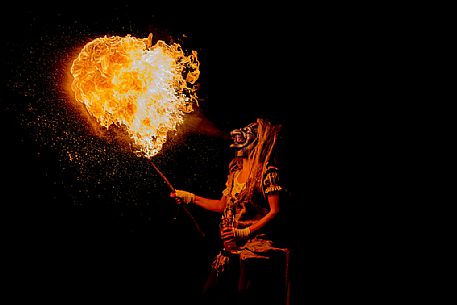
photographer: Maria Fancello
Krampus are horned, antropomorphic folklore figures companions of Saint Nicholas. You can meet them on the 5th or 6th December in regions including Austria, Bavaria, Croatia, Hungary, Slovenia and Northern Italy. This photo was taken in Tarvisio, Friuli Venezia Giulia, Italy

photographer: Maria Fancello
Krampus are horned, antropomorphic folklore figures companions of Saint Nicholas. You can meet them on the 5th or 6th December in regions including Austria, Bavaria, Croatia, Hungary, Slovenia and Northern Italy. This photo was taken in Tarvisio, Friuli Venezia Giulia, Italy
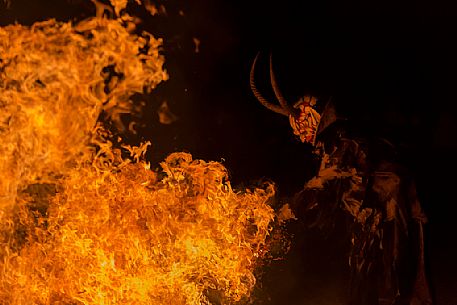
photographer: Maria Fancello
Krampus are horned, antropomorphic folklore figures companions of Saint Nicholas. You can meet them on the 5th or 6th December in regions including Austria, Bavaria, Croatia, Hungary, Slovenia and Northern Italy. This photo was taken in Tarvisio, Friuli Venezia Giulia, Italy

photographer: Maria Fancello
Krampus are horned, antropomorphic folklore figures companions of Saint Nicholas. You can meet them on the 5th or 6th December in regions including Austria, Bavaria, Croatia, Hungary, Slovenia and Northern Italy. This photo was taken in Tarvisio, Friuli Venezia Giulia, Italy

photographer: Maria Fancello
Krampus are horned, antropomorphic folklore figures companions of Saint Nicholas. You can meet them on the 5th or 6th December in regions including Austria, Bavaria, Croatia, Hungary, Slovenia and Northern Italy. This photo was taken in Tarvisio, Friuli Venezia Giulia, Italy
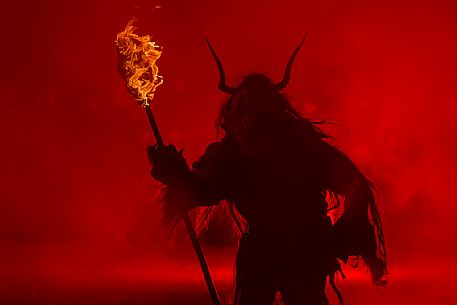
photographer: Maria Fancello
Krampus are horned, antropomorphic folklore figures companions of Saint Nicholas. You can meet them on the 5th or 6th December in regions including Austria, Bavaria, Croatia, Hungary, Slovenia and Northern Italy. This photo was taken in Tarvisio, Friuli Venezia Giulia, Italy
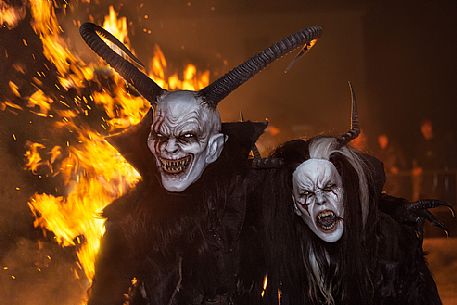
photographer: Anne Maenurm
Bad Santa, meet Krampus: a half-goat, half-demon, horrific beast who literally beats people into being nice and not naughty. Krampus, whose name is derived from the German word krampen, meaning claw, is said to be the son of Hel in Norse mythology. The legendary beast also shares characteristics with other scary, demonic creatures in Greek mythology, including satyrs and fauns, Tarvisio, Italy
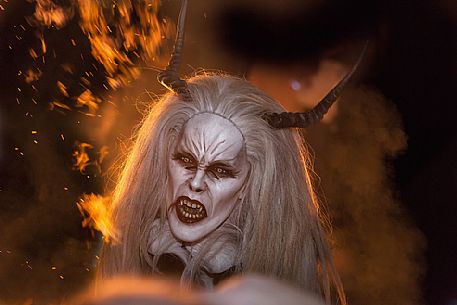
photographer: Anne Maenurm
Bad Santa, meet Krampus: a half-goat, half-demon, horrific beast who literally beats people into being nice and not naughty. Krampus, whose name is derived from the German word krampen, meaning claw, is said to be the son of Hel in Norse mythology. The legendary beast also shares characteristics with other scary, demonic creatures in Greek mythology, including satyrs and fauns, Tarvisio, Italy
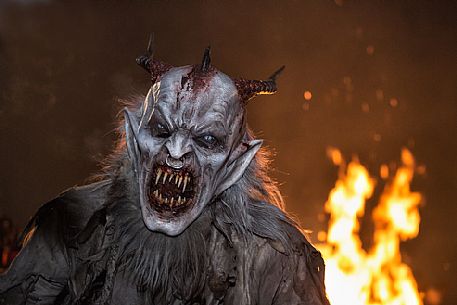
photographer: Anne Maenurm
Bad Santa, meet Krampus: a half-goat, half-demon, horrific beast who literally beats people into being nice and not naughty. Krampus, whose name is derived from the German word krampen, meaning claw, is said to be the son of Hel in Norse mythology. The legendary beast also shares characteristics with other scary, demonic creatures in Greek mythology, including satyrs and fauns, Tarvisio, Italy
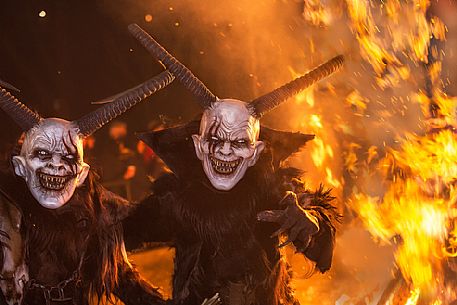
photographer: Anne Maenurm
Bad Santa, meet Krampus: a half-goat, half-demon, horrific beast who literally beats people into being nice and not naughty. Krampus, whose name is derived from the German word krampen, meaning claw, is said to be the son of Hel in Norse mythology. The legendary beast also shares characteristics with other scary, demonic creatures in Greek mythology, including satyrs and fauns, Tarvisio, Italy
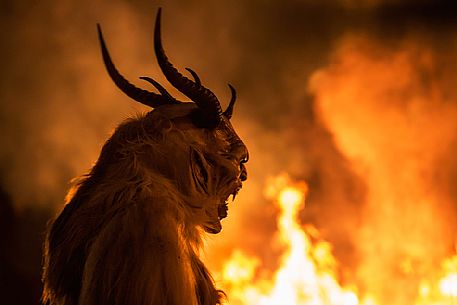
photographer: Anne Maenurm
Bad Santa, meet Krampus: a half-goat, half-demon, horrific beast who literally beats people into being nice and not naughty. Krampus, whose name is derived from the German word krampen, meaning claw, is said to be the son of Hel in Norse mythology. The legendary beast also shares characteristics with other scary, demonic creatures in Greek mythology, including satyrs and fauns, Tarvisio, Italy
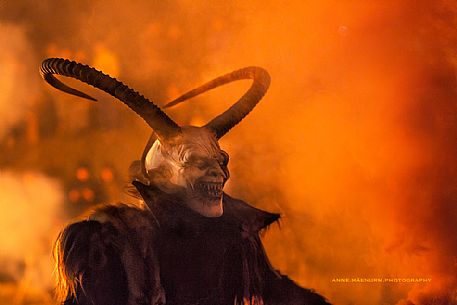
photographer: Anne Maenurm
Bad Santa, meet Krampus: a half-goat, half-demon, horrific beast who literally beats people into being nice and not naughty. Krampus, whose name is derived from the German word krampen, meaning claw, is said to be the son of Hel in Norse mythology. The legendary beast also shares characteristics with other scary, demonic creatures in Greek mythology, including satyrs and fauns, Tarvisio, Italy
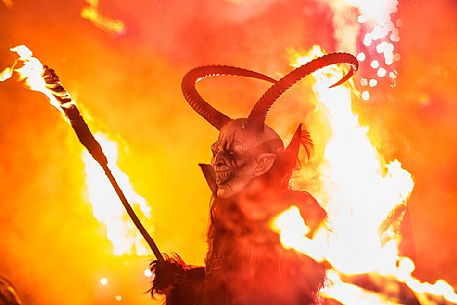
photographer: Anne Maenurm
Bad Santa, meet Krampus: a half-goat, half-demon, horrific beast who literally beats people into being nice and not naughty. Krampus, whose name is derived from the German word krampen, meaning claw, is said to be the son of Hel in Norse mythology. The legendary beast also shares characteristics with other scary, demonic creatures in Greek mythology, including satyrs and fauns, Tarvisio, Italy
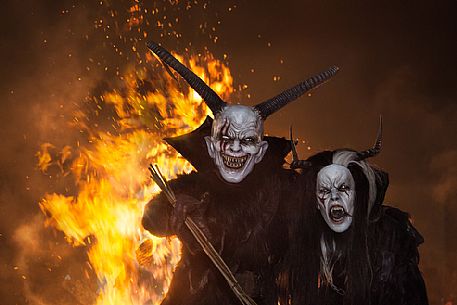
photographer: Anne Maenurm
Bad Santa, meet Krampus: a half-goat, half-demon, horrific beast who literally beats people into being nice and not naughty. Krampus, whose name is derived from the German word krampen, meaning claw, is said to be the son of Hel in Norse mythology. The legendary beast also shares characteristics with other scary, demonic creatures in Greek mythology, including satyrs and fauns, Tarvisio, Italy
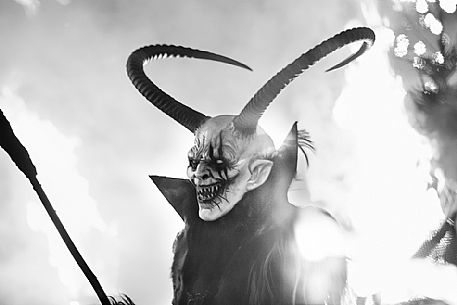
photographer: Anne Maenurm
Bad Santa, meet Krampus: a half-goat, half-demon, horrific beast who literally beats people into being nice and not naughty. Krampus, whose name is derived from the German word krampen, meaning claw, is said to be the son of Hel in Norse mythology. The legendary beast also shares characteristics with other scary, demonic creatures in Greek mythology, including satyrs and fauns, Tarvisio, Italy
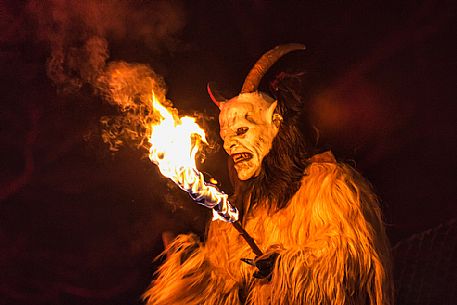
photographer: Anne Maenurm
Bad Santa, meet Krampus: a half-goat, half-demon, horrific beast who literally beats people into being nice and not naughty. Krampus, whose name is derived from the German word krampen, meaning claw, is said to be the son of Hel in Norse mythology. The legendary beast also shares characteristics with other scary, demonic creatures in Greek mythology, including satyrs and fauns, Tarvisio, Italy
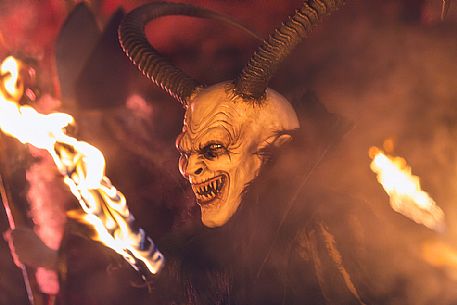
photographer: Anne Maenurm
Bad Santa, meet Krampus: a half-goat, half-demon, horrific beast who literally beats people into being nice and not naughty. Krampus, whose name is derived from the German word krampen, meaning claw, is said to be the son of Hel in Norse mythology. The legendary beast also shares characteristics with other scary, demonic creatures in Greek mythology, including satyrs and fauns, Tarvisio, Italy
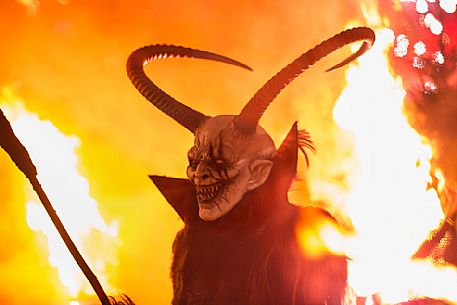
photographer: Anne Maenurm
Bad Santa, meet Krampus: a half-goat, half-demon, horrific beast who literally beats people into being nice and not naughty. Krampus, whose name is derived from the German word krampen, meaning claw, is said to be the son of Hel in Norse mythology. The legendary beast also shares characteristics with other scary, demonic creatures in Greek mythology, including satyrs and fauns,Tarvisio, Italy

photographer: Cristian Umili
Person looks the wall worked by the miners' chisels in an old slate mine in Lavagna site, Liguria, Italy
| torch : Images found 31 |

